Deck 3: Polynomial and Rational Functions
Question
Question
Question
Question
Question
Question
Question
Question
Question
Question
Question
Question
Question
Question
Question
Question
Question
Question
Question
Question
Question
Question
Question
Question
Question
Question
Question
Question
Question
Question
Question
Question
Question
Question
Question
Question
Question
Question
Question
Question
Question
Question
Question
Question
Question
Question
Question
Question
Question
Question
Question
Question
Question
Question
Question
Question
Question
Question
Question
Question
Question
Question
Question
Question
Question
Question
Question
Question
Question
Question
Question
Question
Question
Question
Question
Question
Question
Question
Question
Question

Unlock Deck
Sign up to unlock the cards in this deck!
Unlock Deck
Unlock Deck
1/532
Play
Full screen (f)
Deck 3: Polynomial and Rational Functions
1
Find the coordinates of the vertex for the parabola defined by the given quadratic function.
A)
В)
C)
D)
A)
В)
C)
D)
A
2
Find the coordinates of the vertex for the parabola defined by the given quadratic function.
A)
B)
C)
D)
A)
B)
C)
D)
A
3
Find the coordinates of the vertex for the parabola defined by the given quadratic function.
A)
B)
C)
D)
A)
B)
C)
D)
A
4
The graph of a quadratic function is given. Determine the function's equation.
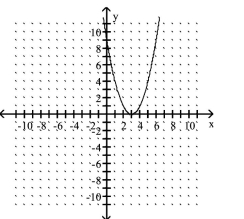
A)
B)
C)
D)

A)
B)
C)
D)

Unlock Deck
Unlock for access to all 532 flashcards in this deck.
Unlock Deck
k this deck
5
The graph of a quadratic function is given. Determine the function's equation.
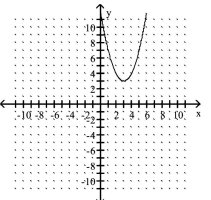
A)
B)
C)
D)

A)
B)
C)
D)

Unlock Deck
Unlock for access to all 532 flashcards in this deck.
Unlock Deck
k this deck
6
The graph of a quadratic function is given. Determine the function's equation.
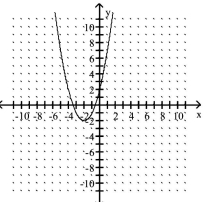
A)
B)
C)
D)

A)
B)
C)
D)

Unlock Deck
Unlock for access to all 532 flashcards in this deck.
Unlock Deck
k this deck
7
The graph of a quadratic function is given. Determine the function's equation.
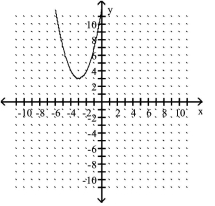
A)
B)
C)
D)

A)
B)
C)
D)

Unlock Deck
Unlock for access to all 532 flashcards in this deck.
Unlock Deck
k this deck
8
The graph of a quadratic function is given. Determine the function's equation.
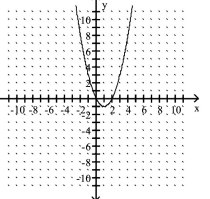
A)
B)
C)
D)

A)
B)
C)
D)

Unlock Deck
Unlock for access to all 532 flashcards in this deck.
Unlock Deck
k this deck
9
Find the coordinates of the vertex for the parabola defined by the given quadratic function.
A)
В)
C)
D)
A)
В)
C)
D)

Unlock Deck
Unlock for access to all 532 flashcards in this deck.
Unlock Deck
k this deck
10
The graph of a quadratic function is given. Determine the function's equation.
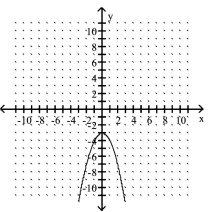
A)
B)
C)
D)

A)
B)
C)
D)

Unlock Deck
Unlock for access to all 532 flashcards in this deck.
Unlock Deck
k this deck
11
Find the coordinates of the vertex for the parabola defined by the given quadratic function.
A)
B)
C)
D)
A)
B)
C)
D)

Unlock Deck
Unlock for access to all 532 flashcards in this deck.
Unlock Deck
k this deck
12
Find the coordinates of the vertex for the parabola defined by the given quadratic function.
A)
В)
C)
D)
A)
В)
C)
D)

Unlock Deck
Unlock for access to all 532 flashcards in this deck.
Unlock Deck
k this deck
13
Find the coordinates of the vertex for the parabola defined by the given quadratic function.
A)
B)
C)
D)
A)
B)
C)
D)

Unlock Deck
Unlock for access to all 532 flashcards in this deck.
Unlock Deck
k this deck
14
The graph of a quadratic function is given. Determine the function's equation.
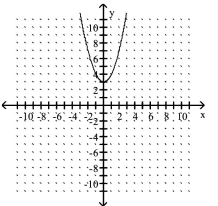
A)
B)
C)
D)

A)
B)
C)
D)

Unlock Deck
Unlock for access to all 532 flashcards in this deck.
Unlock Deck
k this deck
15
The graph of a quadratic function is given. Determine the function's equation.
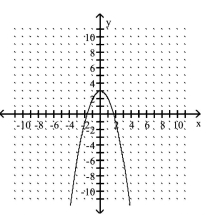
A)
B)
C)
D)

A)
B)
C)
D)

Unlock Deck
Unlock for access to all 532 flashcards in this deck.
Unlock Deck
k this deck
16
Find the coordinates of the vertex for the parabola defined by the given quadratic function.
A)
B)
C)
D)
A)
B)
C)
D)

Unlock Deck
Unlock for access to all 532 flashcards in this deck.
Unlock Deck
k this deck
17
The graph of a quadratic function is given. Determine the function's equation.
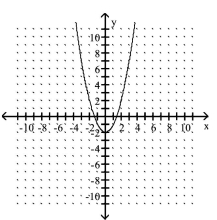
A)
B)
C)
D)

A)
B)
C)
D)

Unlock Deck
Unlock for access to all 532 flashcards in this deck.
Unlock Deck
k this deck
18
The graph of a quadratic function is given. Determine the function's equation.
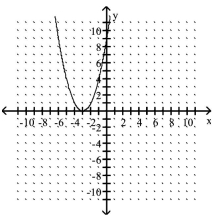
A)
B)
C)
D)

A)
B)
C)
D)

Unlock Deck
Unlock for access to all 532 flashcards in this deck.
Unlock Deck
k this deck
19
Find the coordinates of the vertex for the parabola defined by the given quadratic function.
A)
В)
C)
D)
A)
В)
C)
D)

Unlock Deck
Unlock for access to all 532 flashcards in this deck.
Unlock Deck
k this deck
20
Find the coordinates of the vertex for the parabola defined by the given quadratic function.
A)
B)
C)
D)
A)
B)
C)
D)

Unlock Deck
Unlock for access to all 532 flashcards in this deck.
Unlock Deck
k this deck
21
Find the coordinates of the vertex for the parabola defined by the given quadratic function.
A)
В)
C)
D)
A)
В)
C)
D)

Unlock Deck
Unlock for access to all 532 flashcards in this deck.
Unlock Deck
k this deck
22
Find the axis of symmetry of the parabola defined by the given quadratic function.
A)
B)
C)
D) x
A)
B)
C)
D) x

Unlock Deck
Unlock for access to all 532 flashcards in this deck.
Unlock Deck
k this deck
23
Find the axis of symmetry of the parabola defined by the given quadratic function.
A)
B)
C)
D)
A)
B)
C)
D)

Unlock Deck
Unlock for access to all 532 flashcards in this deck.
Unlock Deck
k this deck
24
Find the coordinates of the vertex for the parabola defined by the given quadratic function.
A)
В)
C)
D)
A)
В)
C)
D)

Unlock Deck
Unlock for access to all 532 flashcards in this deck.
Unlock Deck
k this deck
25
x Find the range of the quadratic function.
A)
B)
C)
D)
A)
B)
C)
D)

Unlock Deck
Unlock for access to all 532 flashcards in this deck.
Unlock Deck
k this deck
26
Find the axis of symmetry of the parabola defined by the given quadratic function.
A)
B)
C)
D)
A)
B)
C)
D)

Unlock Deck
Unlock for access to all 532 flashcards in this deck.
Unlock Deck
k this deck
27
Find the axis of symmetry of the parabola defined by the given quadratic function.
A)
B)
C)
D) )x
A)
B)
C)
D) )x

Unlock Deck
Unlock for access to all 532 flashcards in this deck.
Unlock Deck
k this deck
28
x Find the range of the quadratic function.
A)
B)
C)
D)
A)
B)
C)
D)

Unlock Deck
Unlock for access to all 532 flashcards in this deck.
Unlock Deck
k this deck
29
Find the coordinates of the vertex for the parabola defined by the given quadratic function.
A)
B)
C)
D)
A)
B)
C)
D)

Unlock Deck
Unlock for access to all 532 flashcards in this deck.
Unlock Deck
k this deck
30
Find the axis of symmetry of the parabola defined by the given quadratic function.
A)
B)
C)
D) )y
A)
B)
C)
D) )y

Unlock Deck
Unlock for access to all 532 flashcards in this deck.
Unlock Deck
k this deck
31
x Find the range of the quadratic function.
A)
B)
C)
D)
A)
B)
C)
D)

Unlock Deck
Unlock for access to all 532 flashcards in this deck.
Unlock Deck
k this deck
32
x Find the range of the quadratic function.
A)
B)
C)
D)
A)
B)
C)
D)

Unlock Deck
Unlock for access to all 532 flashcards in this deck.
Unlock Deck
k this deck
33
Find the axis of symmetry of the parabola defined by the given quadratic function.
A)
B)
C)
D) )x
A)
B)
C)
D) )x

Unlock Deck
Unlock for access to all 532 flashcards in this deck.
Unlock Deck
k this deck
34
x Find the range of the quadratic function.
A)
B)
C)
D)
A)
B)
C)
D)

Unlock Deck
Unlock for access to all 532 flashcards in this deck.
Unlock Deck
k this deck
35
x Find the range of the quadratic function.
A)
В)
C)
D)
A)
В)
C)
D)

Unlock Deck
Unlock for access to all 532 flashcards in this deck.
Unlock Deck
k this deck
36
Find the axis of symmetry of the parabola defined by the given quadratic function.
A)
B)
C)
D) x
A)
B)
C)
D) x

Unlock Deck
Unlock for access to all 532 flashcards in this deck.
Unlock Deck
k this deck
37
Find the axis of symmetry of the parabola defined by the given quadratic function.
A)
B)
C)
D)
A)
B)
C)
D)

Unlock Deck
Unlock for access to all 532 flashcards in this deck.
Unlock Deck
k this deck
38
Find the axis of symmetry of the parabola defined by the given quadratic function.
A)
B)
C)
D)
A)
B)
C)
D)

Unlock Deck
Unlock for access to all 532 flashcards in this deck.
Unlock Deck
k this deck
39
Find the axis of symmetry of the parabola defined by the given quadratic function.
A)
B)
C)
D)
A)
B)
C)
D)

Unlock Deck
Unlock for access to all 532 flashcards in this deck.
Unlock Deck
k this deck
40
x Find the range of the quadratic function.
A)
B)
C)
D)
A)
B)
C)
D)

Unlock Deck
Unlock for access to all 532 flashcards in this deck.
Unlock Deck
k this deck
41
Find the y-intercept for the graph of the quadratic function.
A)
B)
C)
D)
A)
B)
C)
D)

Unlock Deck
Unlock for access to all 532 flashcards in this deck.
Unlock Deck
k this deck
42
x Find the range of the quadratic function.
A)
B)
C)
D)
A)
B)
C)
D)

Unlock Deck
Unlock for access to all 532 flashcards in this deck.
Unlock Deck
k this deck
43
Find the x-intercepts (if any) for the graph of the quadratic function.
A) and
B) and
C) and
D) and
A) and
B) and
C) and
D) and

Unlock Deck
Unlock for access to all 532 flashcards in this deck.
Unlock Deck
k this deck
44
Find the y-intercept for the graph of the quadratic function.
A)
B)
C)
D)
A)
B)
C)
D)

Unlock Deck
Unlock for access to all 532 flashcards in this deck.
Unlock Deck
k this deck
45
Find the y-intercept for the graph of the quadratic function.
A)
В)
C)
D)
A)
В)
C)
D)

Unlock Deck
Unlock for access to all 532 flashcards in this deck.
Unlock Deck
k this deck
46
Find the x-intercepts (if any) for the graph of the quadratic function.
A) and
B) and
C) and
D) No x-intercepts
A) and
B) and
C) and
D) No x-intercepts

Unlock Deck
Unlock for access to all 532 flashcards in this deck.
Unlock Deck
k this deck
47
Find the x-intercepts (if any) for the graph of the quadratic function.
Give your answers in exact form.
A)
B)
C)
D)
Give your answers in exact form.
A)
B)
C)
D)

Unlock Deck
Unlock for access to all 532 flashcards in this deck.
Unlock Deck
k this deck
48
Find the x-intercepts (if any) for the graph of the quadratic function.
A) and
B) and
C) and
D) and
A) and
B) and
C) and
D) and

Unlock Deck
Unlock for access to all 532 flashcards in this deck.
Unlock Deck
k this deck
49
Find the x-intercepts (if any) for the graph of the quadratic function.
A) and
B) and
C) and
D) and
A) and
B) and
C) and
D) and

Unlock Deck
Unlock for access to all 532 flashcards in this deck.
Unlock Deck
k this deck
50
x Find the range of the quadratic function.
A)
B)
C)
D)
A)
B)
C)
D)

Unlock Deck
Unlock for access to all 532 flashcards in this deck.
Unlock Deck
k this deck
51
Find the x-intercepts (if any) for the graph of the quadratic function.
Give your answers in exact form.
A)
B)
C)
D)
Give your answers in exact form.
A)
B)
C)
D)

Unlock Deck
Unlock for access to all 532 flashcards in this deck.
Unlock Deck
k this deck
52
Find the domain and range of the quadratic function whose graph is described.



Unlock Deck
Unlock for access to all 532 flashcards in this deck.
Unlock Deck
k this deck
53
Find the x-intercepts (if any) for the graph of the quadratic function.
A) and
B) and
C) and
D) and
A) and
B) and
C) and
D) and

Unlock Deck
Unlock for access to all 532 flashcards in this deck.
Unlock Deck
k this deck
54
x Find the range of the quadratic function.
A)
B)
C)
D)
A)
B)
C)
D)

Unlock Deck
Unlock for access to all 532 flashcards in this deck.
Unlock Deck
k this deck
55
Find the x-intercepts (if any) for the graph of the quadratic function.
A) and
B) and
C) and
D)
A) and
B) and
C) and
D)

Unlock Deck
Unlock for access to all 532 flashcards in this deck.
Unlock Deck
k this deck
56
Find the y-intercept for the graph of the quadratic function.
A)
B)
C)
D)
A)
B)
C)
D)

Unlock Deck
Unlock for access to all 532 flashcards in this deck.
Unlock Deck
k this deck
57
Find the y-intercept for the graph of the quadratic function.
A)
B)
C)
D)
A)
B)
C)
D)

Unlock Deck
Unlock for access to all 532 flashcards in this deck.
Unlock Deck
k this deck
58
Find the y-intercept for the graph of the quadratic function.
A)
B)
C)
D)
A)
B)
C)
D)

Unlock Deck
Unlock for access to all 532 flashcards in this deck.
Unlock Deck
k this deck
59
x Find the range of the quadratic function.
A)
B)
C)
D)
A)
B)
C)
D)

Unlock Deck
Unlock for access to all 532 flashcards in this deck.
Unlock Deck
k this deck
60
Find the x-intercepts (if any) for the graph of the quadratic function.
A) and
В)
C)
D) No x-intercepts
A) and
В)
C)
D) No x-intercepts

Unlock Deck
Unlock for access to all 532 flashcards in this deck.
Unlock Deck
k this deck
61
Choose the one alternative that best completes the statement or answers the question.
Use the vertex and intercepts to sketch the graph of the quadratic function.
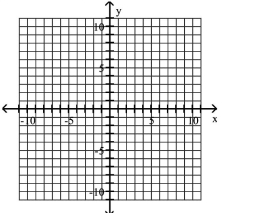
A)
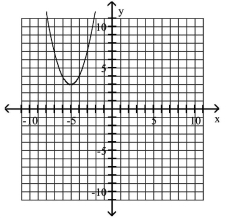
B)
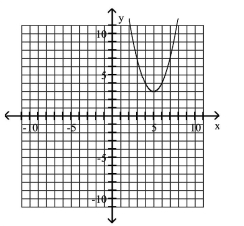
C)
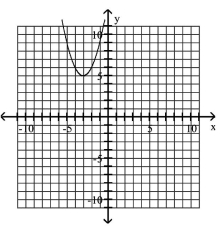
D)
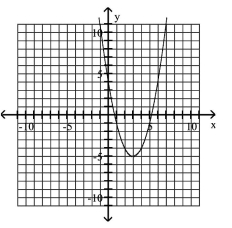
Use the vertex and intercepts to sketch the graph of the quadratic function.

A)

B)

C)

D)


Unlock Deck
Unlock for access to all 532 flashcards in this deck.
Unlock Deck
k this deck
62
Find the domain and range of the quadratic function whose graph is described.
The vertex is and the graph opens down.
A) Domain:
Range:
B) Domain:
Range:
C) Domain:
Range:
D) Domain:
Range:
The vertex is and the graph opens down.
A) Domain:
Range:
B) Domain:
Range:
C) Domain:
Range:
D) Domain:
Range:

Unlock Deck
Unlock for access to all 532 flashcards in this deck.
Unlock Deck
k this deck
63
Find the domain and range of the quadratic function whose graph is described.
The maximum is at
A) Domain:
Range:
B) Domain:
Range:
C) Domain:
Range:
D) Domain:
Range:
The maximum is at
A) Domain:
Range:
B) Domain:
Range:
C) Domain:
Range:
D) Domain:
Range:

Unlock Deck
Unlock for access to all 532 flashcards in this deck.
Unlock Deck
k this deck
64
Choose the one alternative that best completes the statement or answers the question.
Use the vertex and intercepts to sketch the graph of the quadratic function.
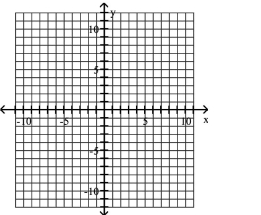
A)

B)

C)

D)
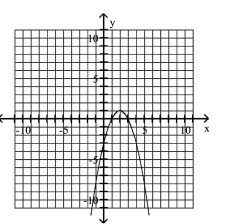
Use the vertex and intercepts to sketch the graph of the quadratic function.

A)

B)

C)

D)


Unlock Deck
Unlock for access to all 532 flashcards in this deck.
Unlock Deck
k this deck
65
Choose the one alternative that best completes the statement or answers the question.
Use the vertex and intercepts to sketch the graph of the quadratic function.
f
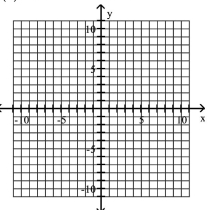
A)
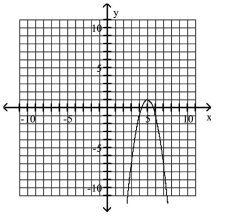
B)
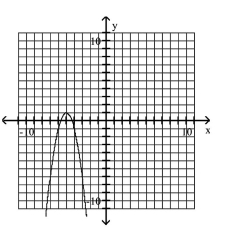
C)
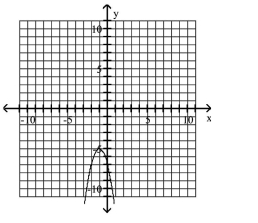
D)
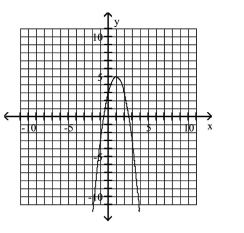
Use the vertex and intercepts to sketch the graph of the quadratic function.
f

A)

B)

C)

D)


Unlock Deck
Unlock for access to all 532 flashcards in this deck.
Unlock Deck
k this deck
66
Determine whether the given quadratic function has a minimum value or maximum value. Then find the
coordinates of the minimum or maximum point.
A) minimum;
B) maximum;
C) minimum;
D) maximum;
coordinates of the minimum or maximum point.
A) minimum;
B) maximum;
C) minimum;
D) maximum;

Unlock Deck
Unlock for access to all 532 flashcards in this deck.
Unlock Deck
k this deck
67
Determine whether the given quadratic function has a minimum value or maximum value. Then find the
coordinates of the minimum or maximum point.
A) maximum;
B) minimum;
C) minimum;
D) maximum;
coordinates of the minimum or maximum point.
A) maximum;
B) minimum;
C) minimum;
D) maximum;

Unlock Deck
Unlock for access to all 532 flashcards in this deck.
Unlock Deck
k this deck
68
Find the domain and range of the quadratic function whose graph is described.
Write an equation in standard form of the parabola that has the same shape as the graph of , but which has a minimum of 5 at .
A)
B)
C)
D)
Write an equation in standard form of the parabola that has the same shape as the graph of , but which has a minimum of 5 at .
A)
B)
C)
D)

Unlock Deck
Unlock for access to all 532 flashcards in this deck.
Unlock Deck
k this deck
69
Choose the one alternative that best completes the statement or answers the question.
Use the vertex and intercepts to sketch the graph of the quadratic function.
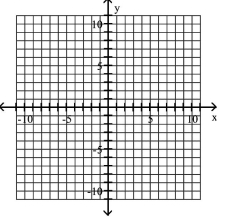
A)
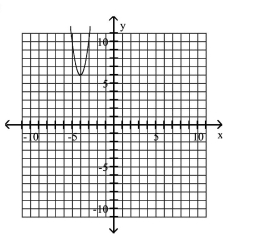
B)
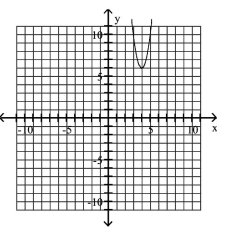
C)
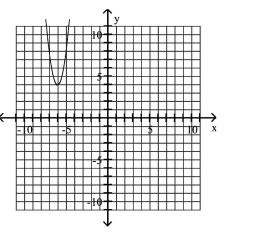
D)
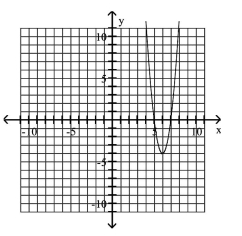
Use the vertex and intercepts to sketch the graph of the quadratic function.

A)

B)

C)

D)


Unlock Deck
Unlock for access to all 532 flashcards in this deck.
Unlock Deck
k this deck
70
Find the domain and range of the quadratic function whose graph is described.
Write an equation in standard form of the parabola that has the same shape as the graph of , but which has its vertex at .
A)
B)
C)
D)
Write an equation in standard form of the parabola that has the same shape as the graph of , but which has its vertex at .
A)
B)
C)
D)

Unlock Deck
Unlock for access to all 532 flashcards in this deck.
Unlock Deck
k this deck
71
Find the domain and range of the quadratic function whose graph is described.
The minimum is at .
A) Domain:
Range:
B) Domain:
Range:
C) Domain:
Range:
D) Domain:
Range:
The minimum is at .
A) Domain:
Range:
B) Domain:
Range:
C) Domain:
Range:
D) Domain:
Range:

Unlock Deck
Unlock for access to all 532 flashcards in this deck.
Unlock Deck
k this deck
72
Choose the one alternative that best completes the statement or answers the question.
Use the vertex and intercepts to sketch the graph of the quadratic function.
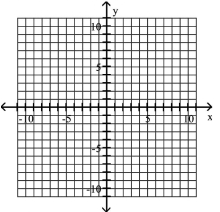
A)
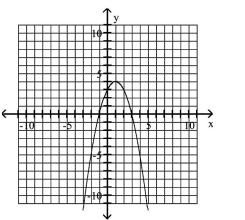
B)

C)
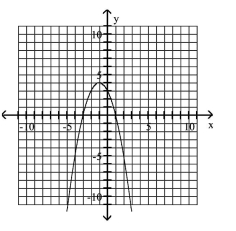
D)
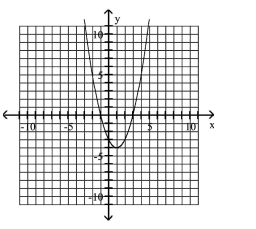
Use the vertex and intercepts to sketch the graph of the quadratic function.

A)

B)

C)

D)


Unlock Deck
Unlock for access to all 532 flashcards in this deck.
Unlock Deck
k this deck
73
Choose the one alternative that best completes the statement or answers the question.
Use the vertex and intercepts to sketch the graph of the quadratic function.
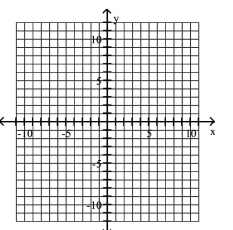
A)
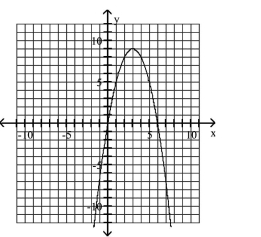
B)
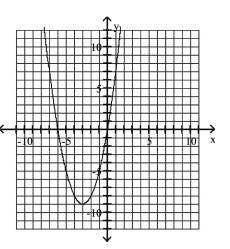
C)
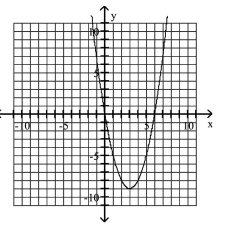
D)
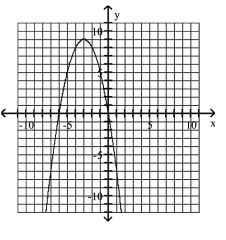
Use the vertex and intercepts to sketch the graph of the quadratic function.

A)

B)

C)

D)


Unlock Deck
Unlock for access to all 532 flashcards in this deck.
Unlock Deck
k this deck
74
Choose the one alternative that best completes the statement or answers the question.
Use the vertex and intercepts to sketch the graph of the quadratic function.
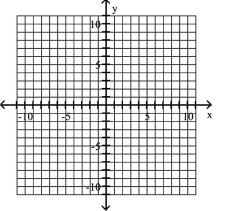
A)

B)

C)
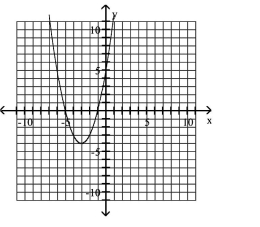
D)

Use the vertex and intercepts to sketch the graph of the quadratic function.

A)

B)

C)

D)


Unlock Deck
Unlock for access to all 532 flashcards in this deck.
Unlock Deck
k this deck
75
Choose the one alternative that best completes the statement or answers the question.
Use the vertex and intercepts to sketch the graph of the quadratic function.
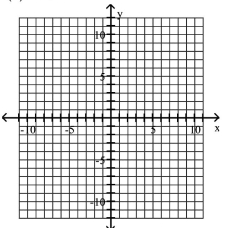
A)
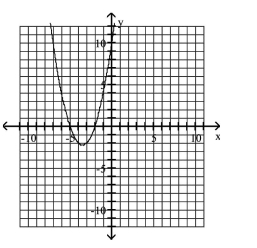
B)
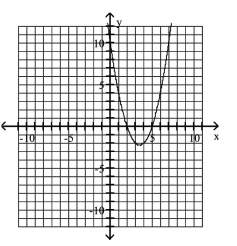
C)
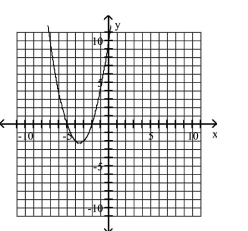
D)

Use the vertex and intercepts to sketch the graph of the quadratic function.

A)

B)

C)

D)


Unlock Deck
Unlock for access to all 532 flashcards in this deck.
Unlock Deck
k this deck
76
Choose the one alternative that best completes the statement or answers the question.
Use the vertex and intercepts to sketch the graph of the quadratic function.
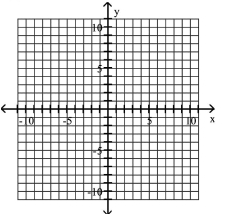
A)
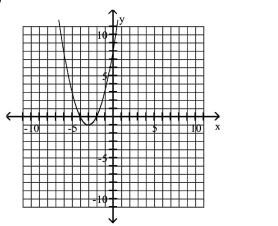
B)
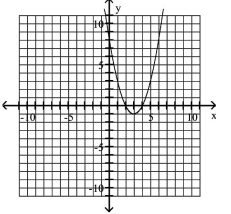
C)
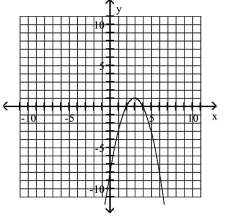
D)
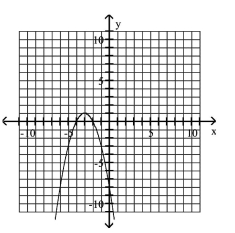
Use the vertex and intercepts to sketch the graph of the quadratic function.

A)

B)

C)

D)


Unlock Deck
Unlock for access to all 532 flashcards in this deck.
Unlock Deck
k this deck
77
Find the domain and range of the quadratic function whose graph is described.
Write an equation in standard form of the parabola that has the same shape as the graph of , but which has a maximum of 8 at .
A)
B)
C)
D)
Write an equation in standard form of the parabola that has the same shape as the graph of , but which has a maximum of 8 at .
A)
B)
C)
D)

Unlock Deck
Unlock for access to all 532 flashcards in this deck.
Unlock Deck
k this deck
78
Choose the one alternative that best completes the statement or answers the question.
Use the vertex and intercepts to sketch the graph of the quadratic function.
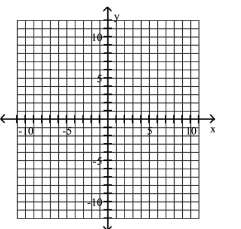
A)
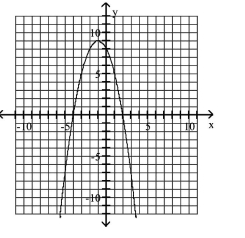
B)
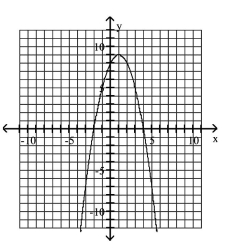
C)
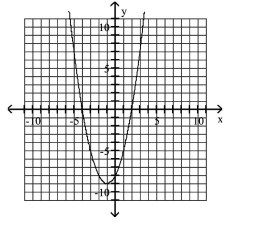
D)
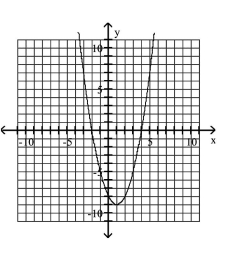
Use the vertex and intercepts to sketch the graph of the quadratic function.

A)

B)

C)

D)


Unlock Deck
Unlock for access to all 532 flashcards in this deck.
Unlock Deck
k this deck
79
Choose the one alternative that best completes the statement or answers the question.
Use the vertex and intercepts to sketch the graph of the quadratic function.
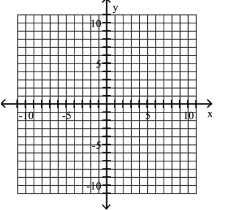
A)
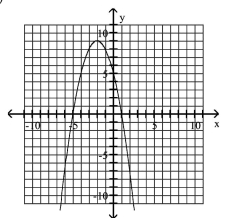
B)
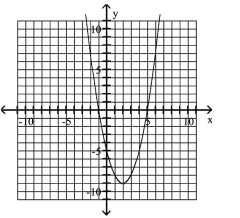
C)

D)
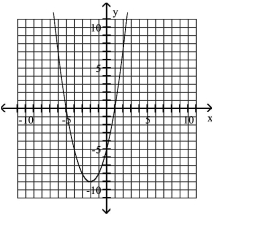
Use the vertex and intercepts to sketch the graph of the quadratic function.

A)

B)

C)

D)


Unlock Deck
Unlock for access to all 532 flashcards in this deck.
Unlock Deck
k this deck
80
Choose the one alternative that best completes the statement or answers the question.
Use the vertex and intercepts to sketch the graph of the quadratic function.
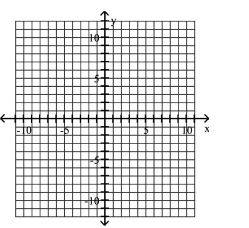
A)
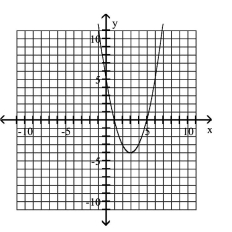
B)

C)
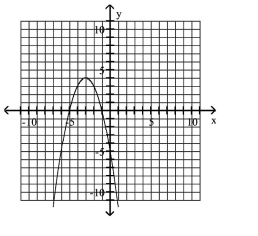
D)

Use the vertex and intercepts to sketch the graph of the quadratic function.

A)

B)

C)

D)


Unlock Deck
Unlock for access to all 532 flashcards in this deck.
Unlock Deck
k this deck



